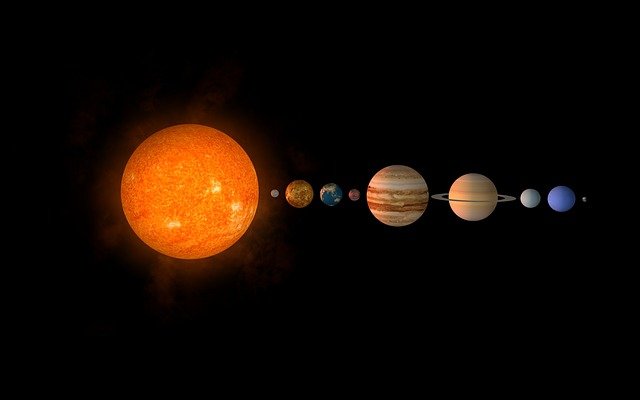*This post may contain affiliate links. This means we may make a commission if you purchase an item using one of our links*
Galaxies are flat because of their rotation. All of the stars, planets and other objects in a galaxy are rotating around the core of the said galaxy, and the conservation of angular momentum allows these objects to spread outward, but not any other direction, which is why they are flat.
There are a lot of shapes in our universe that we know of, from perfectly spherical planets to lumpy asteroids and everything in between. But even with all these unique forms, there is one thing that sticks out: flat galaxies.
So why are some galaxies flat, and why do they form a pancake shape over time?
What Makes a Galaxy Flat?
Table of Contents
When we put it simply, galaxies are flat because of rotation, but it’s actually a lot more complicated than that. Just as everything else in our universe, the shape, and movement of these galaxies are affected by gravity and it’s this force that makes some galaxies appear so thin.
It’s important to note that not all galaxies are flat. The most common type of galaxies to appear flat are spiral galaxies. Elliptical, lenticular, and irregular galaxies can have any number of different shapes.
Conservation of angular momentum is the key to what makes galaxies flatten out. Conservation of angular momentum is defined as a physical property of a spinning system that says its spinning will remain constant unless acted upon by some outside force. This means that the galaxies will continue to spin indefinitely.
A galaxy is formed through a series of millions upon millions of collisions. Once a black hole forms in the center of a galaxy, everything will begin to move in a rotation around it because of its gravitational pull.
All the while, things in the said galaxy will be colliding with one another, and the force of these collisions will cancel each other out, so the objects will continue to move in the direction of the rotation but not in any other direction.
All of this combined together creates the perfect recipe for a flat galaxy, and as the galaxy continues to spin and gain more mass, it will appear even more flattened.
Is Our Solar System Flat?

Yes, our solar system is flat and rotates on the same plane until we reach past the planet Neptune. Dwarf planet Pluto and the Kuiper belt beyond begin to rotate in a more erratic, less flat orbit.
Our solar system is flat for the same reasons galaxies are flat: the conservation of angular momentum. This physics concept is what causes whole galaxies, solar systems, and even moons around the planets themselves to rotate the way that they do
This isn’t to say that all solar systems are flat, though. The objects in a solar system may have a more erratic orbit earlier in the life of the solar system, and the further away from the gravitational pull from the sun an object is, the more off-kilter its orbit can become.
Are Elliptical Galaxies Flat or Spherical?
Elliptical galaxies can range from slightly flat to spherical. Unlike in a spiral galaxy, all of the objects in an elliptical galaxy rotate on the same plane, but not in the same direction.
There are 4 types of galaxies, and all of them have different shapes. These galaxies are:
- Spirals– A galaxy with many arms extending out as it spins
- Ellipticals– Disk-like galaxies
- Lenticular– A shape slightly between a spiral and elliptical galaxy
- Irregular– Galaxies with no defined shape Spiral galaxies are almost always flat, but elliptical galaxies vary in shape. They can appear as slightly flattened spheres, all the way to true spheres.
Elliptical galaxies are believed to be the most common type of galaxy in the universe, but because their shape isn’t as easily spotted as their spiral counterparts, we haven’t identified as many of them.
Elliptical galaxies also range greatly in size, from huge ellipticals to dwarf ellipticals. It’s theorized that elliptical galaxies are made up of the oldest stars in the universe, which is why their shape and sizes vary so greatly.
Why Is the Milky Way Galaxy Flat?

The Milky Way is nearly flat, but it is slightly warped due to gravitational influences from other galaxies or dark matter.
It was believed for a long time that the Milky Way, which is our home galaxy, was flat. Our galaxy is a spiral galaxy, and since spiral galaxies are almost always flat, it would make sense for the Milky Way to be flat as well.
More recently, though, scientists have discovered that the Milky Way galaxy is warped. It is believed that at the very edges of the galaxy, it is warped in either direction and that this warp was caused by interactions with other galaxies or dark matter.
Since it’s impossible to tell exactly what in the history of the universe caused this change in the shape of our galaxy, we can only speculate as to why the Milky Way, a previously flat spiral galaxy, now has a distinct warp.
In Summary
- Galaxies are flat because of the conservation of angular momentum.
- Flat galaxies are usually spiral galaxies.
- Our solar system is also flat because of the conservation of angular momentum. Past Neptune, our solar system ceases to be flat.
- Elliptical galaxies are not flat and lean more towards a spherical shape.
- The Milky Way was probably flat at one time, but currently, it is warped because of some unknown force.
References
https://www.bbc.com/news/world-us-canada-49182184
https://iopscience.iop.org/article/10.1088/0067-0049/203/2/17


